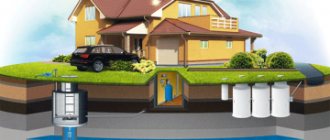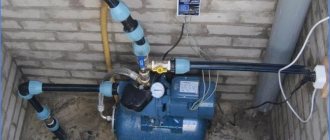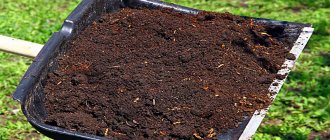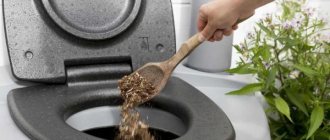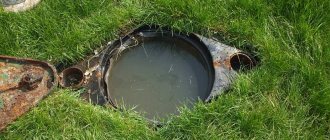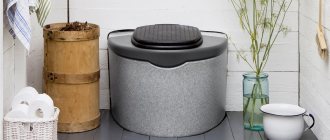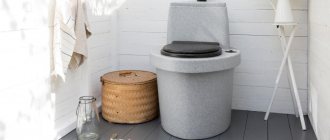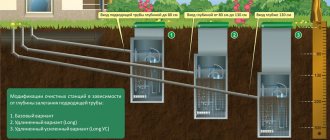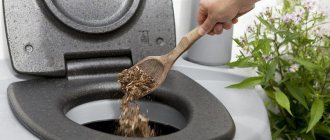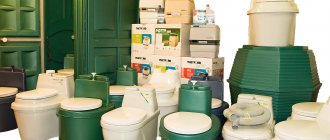In summer cottages and garden plots, the problem of disposing of organic waste often arises - leaves, weeds, peelings, sawdust and other things. Unlike inorganic waste (glass, plastic, etc.), all this can be used to produce clean, environmentally friendly fertilizer - compost. It is obtained as a result of the biological process of decomposition under the influence of the vital activity of microorganisms.
Adding compost to any soil improves its quality characteristics. Clay soils acquire a lighter, crumbly structure, while sandy soils retain moisture better. Let's look at how you can make a compost pit and prepare compost correctly.
What is compost
Compost is an organic fertilizer that is obtained through the decomposition of animal and plant waste under the influence of various microorganisms, fungi and insects. Composting requires air because the process is aerobic. Therefore, raw materials are stored in a compost bin located above ground level, although it is often called a “pit” in the old fashioned way. Since there is not enough air in the soil, the residue will simply rot, but will not turn into fertilizer.
Properly prepared compost is almost no different from humus Source vasha-teplitsa.ru
For enhanced vital activity of microorganisms and accelerated composting, the following components are necessary:
- carbon (dry leaves, hay, straw, onion and nut peels - in a word, “brown” waste) - its participation in the process occurs with the release of heat;
- nitrogen (fresh weeds, tops, rotten fruits and vegetables - “green” raw materials) is necessary in nitrogen metabolism;
- oxygen - without it, carbon will not be able to oxidize and the decomposition process will stop;
- water - with high humidity, but without compromising aerobic conditions, the necessary environment for the life of bacteria and microorganisms is created, which speeds up the processing of raw materials into fertilizer.
The rate of maturation of the contents depends on the percentage of these substances in the compost pit.
Rules for filling the pit
To make a good nest, it is important not only to properly arrange the hole, but also to fill it. There are several rules to consider when making compost.
Preparation of material
It is best to grind all components before adding. This will make the worms' work easier and speed up the maturation of the material. You can use garden shears, a shovel, and other available equipment for this.
It is better to grind the components before placing them in the compote structure.
Selecting Additional Components
To improve the quality of humus, additional components are used to prepare compost:
- pieces of vegetables, fruits. They accelerate the ripening process of the product, attract worms, and increase the content of nutrients in raw materials. However, they are added in limited quantities to avoid the occurrence of fungus;
- clay, garden soil. These products quickly absorb excess moisture, allowing you to obtain not humus, but a soil mixture that can be used for growing seedlings;
- lime. It increases the potassium content in the finished product, normalizes the acidity level, destroys harmful microorganisms, and prevents the growth of seeds;
- ash. Increases the potassium content in the product, normalizes the acidity level;
- rotted horse manure. Accelerates compost maturation.
To improve the quality of humus, additional components are used to prepare compost.
Preparing the composter
Not only the material needs preparation, but also the composter itself. It is necessary to place wood chips or crushed stone at the bottom. This is a drainage layer that removes excess liquid from the product and prevents the material from getting wet.
The walls of the composter need to be insulated. Branches are used for this. They are installed vertically in several layers.
Instead of branches, you can use compressed hay.
Warming compost with branches in several layers
Waste stacking
Rules for laying materials:
- each layer should have a thickness of 5-10 cm;
- the material is compacted tightly after laying each layer;
- When laying, alternate raw materials that emit carbon and nitrogen. Ratio 3:1 respectively;
- you need to alternate layers of wet and dry material. The first raw material should be 5 times more than the second;
- The top of the compost is moistened, but not abundantly.
The quality of humus in a compost facility depends on the correct placement of materials.
How long will it take for the fertilizer to be ready?
Before you properly make a compost pit at your dacha and what to add, you need to know what processes occur during the preparation of the substrate. For good aeration and humidity level, the mass must be stirred and shoveled from time to time.
Regular mixing of components in the compost pit Source svoyabesedka.ru
With a sufficient amount of air and water, the temperature of the mass is first 50-70 degrees (at this time the components are intensively processed, helminth eggs and pathogenic microflora are neutralized), then 40-45 (the compost is maturing). The process of obtaining good organic fertilizer takes 2 years, but using forced aeration or modern compost accelerators, it is obtained in 1 season.
During the processing and maturation of the substrate, the level of mineral fertilizers in it increases in a form accessible to cultivated plants:
- potassium;
- phosphorus;
- nitrogen;
- magnesium;
- boron;
- zinc and others.
The mixture becomes homogeneous, free-flowing, pleasant to the touch, similar to humus.
Advantages and disadvantages of compost
Compost has the following benefits:
- availability;
- can be done on a plot of any size;
- replaces all types of organic, mineral fertilizers;
- contains a large amount of useful substances;
- It loosens the soil well, unlike other fertilizers.
Minuses:
- long cooking;
- contains little nitrogen - special additives help solve this problem.
Compost contains nutrients necessary for normal growth
Additives for compost pit
What can you use for compost?
To get high-quality fertilizer, you should know what can be put in the compost pit.
What can and cannot be used to fill a hole Source stroyboks.ru
Many wastes are suitable for preparing the substrate, for example:
- manure, bird droppings, spoiled feed;
- shavings, wood chips, sawdust, pine needles, dry leaves;
- weeds, shoots, small fruits, tops, corn cobs, lawn clippings, corn and sunflower stalks, algae;
- peat;
- vegetable food waste (vegetable and fruit peels, seed husks, nut shells, cores, coffee cake, fish scales and entrails, eggshells).
The optimal ratio of green (nitrogen) and brown (carbon) raw materials is considered to be 1 to 25-30. For example, in fallen leaves it is 1 to 50, and in fresh grass – 1 to 15. If these components are taken in equal proportions, the composition will be almost ideal.
The construction of a compost pit at the dacha allows you to avoid purchasing expensive manure and humus, since the resulting soil is used in the same way as other organic fertilizers - for digging, in holes and planting holes, as mulch.
Adding humus to the greenhouse Source sveklon.ru
What can you throw in the pile?
Compost includes household waste and plant residues from the garden. The decision to equip such a structure on your site will bring double benefits: get rid of various garbage and get excellent fertilizer for the beds.
You can send into the dug hole:
- leaves fallen from trees;
- weeds without seeds, grass;
- branches, wood waste and sawdust, rhizomes of shrubs;
- tops of vegetable plants;
- all kinds of peelings from: potatoes, apples, beets, cabbage and so on. Table scraps are also suitable for producing humus;
- unnecessary paper, cardboard.
All components placed in storage must be thoroughly crushed beforehand, especially for wood, paper, and cardboard products. No varnishes, paints, or any fats should be included with the waste. It is advisable to protect the top of the formed box from the sun so that the mixture does not dry out and from precipitation, in order to avoid waterlogging. Sheets of slate and black film will come in handy here. For convenience, it is worth attaching the block to the edge of the polyethylene, then it can be easily opened and closed.
Note. In the natural environment, the compost pile matures within two years.
Standards and requirements for a compost pit
The compost bin must be located at a distance of at least:
- 8 m from sources of drinking water;
- 7 m from the cellar;
- 2 m from the neighbor's fence;
- 5-6 m from the drainage area of a bathhouse or shower;
- 7-8 m from the house and summer kitchen.
This applies to both your own plot and neighboring plots. It follows that a compost pit is a structure that should be placed closer to the fence or toilet.
Before making a compost bin, you should also take into account fire safety standards, according to which there must be free passage around it (at least 1 m wide). Usually they choose a place hidden from view, where almost nothing grows.
In addition, the compost pit can be located in the shade or partial shade, on a slight slope or hill. The main thing is that it should not be in a low place, since when the temperature drops, the processes occurring inside may stop.
A place for a compost bin, hidden from view Source seloveselo.ru
Besides:
- It is better that the bottom of the compost pit is earthen; in the case of a ready-made container with a perforated bottom, it is advisable to raise it 10 cm above the ground level so that excess water can drain freely and the mass does not rot;
- for the same purpose, the bottom should not be lined with solid material;
- Film or roofing felt can sometimes be covered on top to increase the temperature and prevent the top layer from drying out;
- It is not permissible to plant plants in the compost pit; for decorative purposes, you can install a removable container with flowers;
- if the compost pit is constructed in the ground, then it should be buried no more than 0.5 m and the contents should be mixed more often for aeration;
- the dimensions of the compost pit can be different - depending on the amount of raw materials and the need for organic fertilizer, for example, 1 x 2 m or 0.8 x 1 m, and the height - convenient for shoveling, usually 1-1.2 m;
- the order of laying the components does not matter - the main thing is that the ratio of nitrogen and carbon is maintained, as described above;
- To avoid smell and flies, you should try to sprinkle food scraps with green mass or peat.
The waste is lightly sprinkled with soil Source pics.botanichka.ru
See also: Catalog of companies that specialize in house and landscaping work, design and construction of MAF
If the structure is planned without a bottom, then the turf is first removed, and the surface is dug up, leveled, compacted, and the removed turf is laid with the roots facing up. If the weeds have not yet become seeded and are not very tall, then it is permissible to place the box directly on the grass with the condition of immediately laying it at a height of 20-30 cm so that the plants do not break through to the light.
Where to make a pit
The place for constructing the pit is chosen where there are no plantings. It is better to use an area that is unsuitable for planting, where there is infertile soil and other conditions unfavorable for plant growth.
Requirements for a place for a compost pit:
- reliable wind protection. This will prevent the spread of unpleasant odor throughout the area;
- Free access. Waste must be turned over throughout the entire maturation period, so the pit must be made so that nothing interferes with approaching it;
- Smooth surface. If the composter is made in a depression, then excess moisture will accumulate inside, which will lead to rotting of the material;
- The composter is installed above the soil level. This will facilitate maintenance and ensure deep heating;
- the area should be in shade or partial shade. Direct sunlight contributes to the drying of raw materials and the growth of seeds;
- Do not place the pit next to trees, especially conifers. Waste will lead to the death of plants.
Place for arranging a compost pit
What can a box be made from?
To briefly answer the question, what is a compost pit? It is essentially a box with a lid, but without a bottom. It can be made from many materials:
- boards;
- pallets;
- slate;
- bricks;
- concrete;
- metal;
- metal mesh with fine mesh;
- polymer plastic.
There is even experience in creating compost in thick garbage bags.
Ready-made plastic containers
Before making a compost pit at your dacha, it makes sense to take a closer look at ready-made polymer containers. Similar garden products at affordable prices are presented in a wide range and various sizes.
Ready-made composter in the garden Source www.fermeru.pro
Their advantages are as follows:
- compactness;
- aesthetics;
- the presence of a lid and a side door for removing finished humus;
- aeration system.
Containers are offered disassembled with assembly instructions.
Wooden box
In this case, you can use boards or slats. This should not be waste material, since the construction is not built for one year and the appearance will depend on what kind of wood is used. Before properly making a compost pit, boards or slats should be treated with an antiseptic composition against rotting or painted on all sides.
The wooden structure must be:
- strong;
- roomy;
- with a collapsible front wall, the removal of which did not reduce the rigidity of the box.
The manufacturing process consists of several stages:
- First, the turf is removed and the fertile soil is removed;
- then in the corners, to a depth of 40 cm, bars are dug into which boards or slats will be attached;
- wooden planks are mounted on self-tapping screws, leaving gaps of 3-5 cm;
- The lower 1/3 of the front wall is made removable to make it convenient to select ready-made humus.
The bottom boards can be easily removed and ready-made humus can be selected Source www.polhill.co.uk
If a metal mesh is nailed at a height of 1/3 from the ground parallel to the base area, the rotted product will invariably fall down, being saturated with oxygen, which will lead to better structure finished mass. The process is similar to the settling and removal of ash from a stove after burning wood.
Selecting and preparing a site on the site
Since a compost pit is a place where organic waste rots, it is important to install it in such a way as not to harm yourself and the environment. The distance to natural or artificial reservoirs must be at least 20 m. They also ensure that rain runoff does not enter drinking water sources.
It is better to maintain a distance of 10 to 30 m from residential buildings. In this case, the composter is located in a shaded area, well protected from the wind. There should be no fruit and berry crops nearby, as there is a high risk of contamination of groundwater with products of rotting garden waste. It is best to install the structure in a distant, inconspicuous corner of the garden, making a convenient entrance or path to it.
Video description
Another way to build a compost pit from pallets is presented in the video:
Concrete compost pit
Before making a compost pit from concrete mortar, you should think carefully because:
- monolithic walls will not allow air to pass through and rotting of the mass is possible;
- construction of formwork and mortar reinforcement will be required;
- you will have to order delivery of concrete or mix it on site;
- It will take a lot of time, effort and money.
Another thing is a ready-made concrete ring for a compost pit. It just needs to be placed on the ground and covered with a lid. The only inconvenience is that it is difficult to mix the components in it, so it is better to use 2 rings so that you can transfer the mass from one to another.
Installation of a concrete ring for a compost pit Source media.makler.md
Brick compost pit
If there is an old or unnecessary brick that has nowhere to be used, then it can be used to build a compost pit. It is placed on a sand bed using cement mortar. The front wall is made with pieces of metal profile and removable boards and is provided with a lid. Laying is carried out with or without holes for air access. In any case, the bottom and top rows must be continuous.
A similar front wall solution is suitable for most compost pit options Source pbs.twimg.com
Types of facilities for preparing compost
The type of composter depends on what type of composting you need - anaerobic or aerobic.
- With anaerobic composting, the decomposition of organic matter occurs without the participation of oxygen, in the presence of anaerobic bacteria.
- Aerobic composting is the more common type. To process organic matter, oxygen access is provided to it, which is necessary for the life of aerobic bacteria, earthworms, other microorganisms and insects.
For the first type, compost pits are arranged, the contents of which, after storage and compaction, are covered with earth or covered with an airtight film. The decomposition process in this case is slow, with the formation of methane and hydrogen sulfide - gases with a rather unpleasant odor.
Compost pit made of concrete blocks
The disadvantage of this method is that the weed seeds in the finished compost remain viable, since composting occurs at a temperature that rarely exceeds 30 degrees. Whereas in aerobic type composters it reaches 65-70 degrees. In such conditions, not only seeds die, but also harmful microorganisms and insect larvae, which are the causative agents of many diseases. And decomposition goes much faster.
Therefore, the second method is more popular. But to obtain complete fertilizer, you need to know how to properly make a compost heap on your site.
Plastic container
The fastest and easiest way is to install a ready-made plastic composter, which can be bought at garden centers. Such products can be a simple prefabricated structure in the form of square or hexagonal boxes without a bottom and a lid, or a full-fledged container with ventilation grilles, holes for draining excess liquid, a top lid for loading waste and a door at the bottom for removing the finished substrate.
Container type garden composter
The advantages of this solution are durability of the structure, presentable appearance, and ease of installation. The disadvantage is the high cost. One container of the type shown in the photo costs 4-5 thousand rubles.
Wooden composter
It is much cheaper to make a composter from wood - from boards and bars left after construction, commodity pallets, old window and door frames. It is made in the form of a box with or without a lid, the walls of which are not solid, but with slots for air access to rotting waste. Therefore, pallets are ideal for this purpose. In addition, they have quite suitable sizes. You simply need to clamp 4 pallets together to create a composting bin. Its front wall is made removable for mixing and removing the contents.
Homemade composters from pallets
There are several ways to make a compost heap at your dacha out of wood. For example, a box for it can be made collapsible from boards with cuts at the ends. Or assemble it from the remains of timber in the form of a small log house.
Collapsible box made of boards with cuts
But the easiest way is to put boards on 4 corner posts made of timber. They can be dug into the ground at the corners of the future composter or a frame with transverse veins can be made. The design can be anything, it is important to give it optimal dimensions and protect it from rotting.
- The volume of the container must be at least 1-1.5 cubic meters so that the mass of composted waste is enough to maintain a high temperature and maintain humidity. The optimal dimensions are 1x1.5x1.5 m and close to them.
- Before assembling the box, all prepared wooden elements must be soaked in a product with antiseptic properties.
- At the installation site, you need to remove the top layer of soil and compact the bottom.
After installing the frame or corner posts, boards are placed horizontally on three sides, between which gaps are left for air circulation. The front wall is sutured only from below to no more than half the height. The upper part is made removable or in the form of a hinged door. The lid is made separately, but this is not a mandatory design element - you can do without it.
The lid is needed to hide the unsightly contents of the containers
Changes can be made to this design depending on the availability of available material. For example, make the walls in the form of a lattice of thin slats or attach a metal mesh to the frame.
Some gardeners make composters with a wooden bottom, which makes it easier to remove the finished substrate and mix the compost during the ripening process. In this case, the bottom should also have slots, and it should be raised above the ground so that air enters the box from below.
However, such a bottom makes it difficult for earthworms, who are important participants in the process of processing organic matter, to penetrate the compost. Therefore, when deciding how to make compost at the dacha, it is better to choose boxes without a bottom, and lay large branches or other drainage material on the ground that allows excess water to pass through and does not interfere with air circulation and the migration of worms.
Mesh composter
A suitable material for making a composter is a durable galvanized steel mesh with cells of any size. In addition to this, you only need wire and air-permeable non-woven material - spunbond or lutrasil.
- A cylinder is rolled out of the mesh, making an overlap of 15-20 cm, and fastened with soft wire.
- The resulting basket without a bottom is placed in place, having first removed the turf from the ground, and tied to a fence, pole, or any other support.
- The inner walls are covered with spunbond
- To prevent the fabric from moving, its edges are turned outward and secured with clothespins or paper clips on the mesh.
Composters made from scrap materials
If the farm has old sheets of slate, corrugated sheets, large car or tractor tires, with their help you can solve the problem of how to quickly make compost at the dacha.
Advice! It is necessary to drill holes for ventilation in sheet materials before installing them.
They can be mounted in different ways.
- On a wooden frame - according to the same principle as a plank structure.
- Digging the lower part into the ground and tying it around the top with wire.
- Drive pegs into the ground on both sides of the sheet.
Slate composter with wooden frame
Made from slate and metal profiles
The stages of work are as follows:
- First, you should dig a 40 cm deep trench around the perimeter of the future structure.
- Then install 2 pieces in each corner. metal profile in the form of a channel and fasten them in pairs so that with the open part they are directed in the right directions.
- After this, insert the material vertically (it is better to use flat slate).
- Fill the trench and compact the soil.
The front wall of the compost pit does not need to be deepened so that it can be removed freely. Since the edges of the metal profile are sharp, protection must be provided. These could be pieces of a disused watering hose cut lengthwise.
Video description
For a compost pit made of wave slate, you will need a frame made of boards. If the height of the box is less than a meter, then the material can be buried only to the length of a shovel. This can be clearly seen in the video:
Mesh at the service of compost
The mesh simply needs to be secured to buried pipes or bars and covered with permeable material or a lid. This is a very simple, cheap and quick option.
Metal mesh is an economical material, but the waste will be accessible to rodents.
Types of environmentally friendly waste
A proper compost pit only provides useful and effective fertilizer for plants when the compost is made from environmentally friendly, natural and safe products.
The first mandatory layer is tree branches, previously sprinkled with lime, which serve as natural drainage. All other layers are chaotically located plant components:
- chopped branches of trees of various species;
- bark;
- fallen needles;
- last year's or fallen leaves of trees and shrubs;
- mown or pulled out weeds;
- peeling vegetables, fruits, berries;
- spoiled fruits;
- waste after brewing coffee or tea;
- paper waste without printing ink and foil elements;
- woodworking waste (shavings, sawdust);
- hay, straw;
- ash and other waste from wood combustion;
- chicken droppings and rotted manure.
It is advisable to sprinkle large layers of contents with a layer of soil to speed up the decomposition process.
For obvious reasons, it is absolutely forbidden for oil residues, plastic bottles or plastic bags to get into the garden composter.
Toxic substances that are released during the decomposition of certain inorganic elements can be dangerous to plants and human health.
We invite you to familiarize yourself with Wine made from jam at home: 9 recipes
Let us designate a list of those components that are taboo:
- plastic, polyethylene, rubber, synthetic, metal products;
- potato or tomato tops infected with late blight;
- animal bones;
- pits from fruit bushes and trees;
- pet hair;
- glass.
Video description
A very interesting solution for a compost pit-bed made of metal mesh and spunbond is presented in the video:
From a fine-mesh mesh you can make a rotating structure on supports in the form of a horizontal cylinder with wooden sides.
This design of the compost pit allows you to mix the contents without much effort Source info.zhratsushi.ru
Concrete compost pile
If you are thinking about how to properly arrange a compost heap, the photo is definitely worth considering. They are presented in this article. The most labor-intensive structure is considered to be the one built from concrete. In this case, it is necessary to equip two equal compartments, one of them will be intended for old compost, while the other will be used for regular replenishment.
Such a design should have a lid that lifts when it is necessary to add fertilizer or throw out garbage. In order for the compost to be of the highest quality, it is better not to use weeds, because this can lead to harmful seeds in the soil. You need to provide access for earthworms, otherwise you will face the problem of long maturation.
How to disguise compost
The appearance of a compost pit is usually not attractive. The problem is especially acute for small areas that are visible from all sides. But, if this place is disguised, then it will fit perfectly into the overall landscape of the garden or vegetable garden.
For this use:
- A narrow hedge. This method is especially good if there is a similar fence around the perimeter of the entire site.
- Artificial screen. Depending on the style of landscape design, you can choose a product, for example, in Chinese or Japanese traditions.
- A bamboo fence will be appropriate in many directions, for example, in minimalism or Asian styles. Far Eastern bamboo is planted in the central zone. Climbing plants climb well up its trunks.
- Wicker fabric made from willow branches. It can also be artificial.
- Trellis with climbing plants.
All elements are placed at some distance from the compost itself to ensure easy access to it.
Beans climbing up a mesh trellis will soon completely hide the compost bins Source pics.botanichka.ru
If a finished plastic product is used, then there is no special need for its decoration.
Raw materials for composting
Everything can be composted:
- leaves;
- green freshly cut grass;
- manure;
- branches, sawdust, bark, paper;
- algae and other pond plants;
- peat;
- fecal matter from the sewer.
It is better to take several components. It is desirable that the composition include nitrogen and carbohydrate ingredients, as well as soil from the site. Nitrogenous substances include: fresh grass, manure or droppings, fresh vegetables, fruits. Carbonaceous components include paper, dry grass, sawdust, straw, and cardboard.
Ash adds nutritional value. To make the compost more saturated, you can add complex or single-component mineral fertilizers at the end. In any case, compost will help increase the amount of humus in the soil and revitalize the soil with the help of bacteria.
Popular brands and models of containers
The two models L&T Globe and Bulbeo gained the most popularity.
L&T Globe
The first development from a Finnish manufacturer is suitable for those who live on the site year-round, since this composter can also be used in winter (down to -10 degrees). If the temperature drops below, the process stops and resumes when warmer. Besides:
- working volume is 310 l;
- made of durable polyethylene;
- thermal insulation made of foamed polyethylene 15 cm thick;
- height 73 cm;
- spherical shape with globe relief;
- deep dark green color.
This stylish product does not need to be refined. It consists of 3 parts:
- removable small lid with adjustable ventilation shutter (winter/summer);
- removable housing, which provides access from all sides;
- an expansion ring that allows you to increase the volume by 160 liters;
- bottoms with holes for ventilation at the top and for drainage at the bottom.
The Finnish composter does not need additional decoration Source insales.ru
There are no small and heavy parts in the Glob design. In a composter, the contents are completely isolated. The product is very ergonomic and aesthetically pleasing. At a high rate of compost maturation, productivity is comparable to a 700-900 liter compost pit.
Bulbeo
Bulbeo - a development from a Spanish manufacturer, is available in 2 variations of 700 and 900 liters. When disassembled, the modular design made of environmentally friendly durable polyethylene is easy to transport and takes up little space during storage.
This seasonal composter has:
- wide hatch for loading components;
- convenient doors on 5-6 sides for removing the substrate;
- bud shape, color – calm green;
- the case has holes for ventilation;
- assembly is carried out without the use of tools.
Dimensions:
- width – 1.22 m;
- height – 0.85 m;
- weight – 19 kg.
Rounded walls contribute to better heat transfer and, accordingly, faster preparation of compost.
Approaches to the container are made from all sides Source static-eu.insales.ru
Rules for operating the pit
To get good humus, it is important not only to prepare the pit, materials and fill the composter, it is also necessary to ensure proper care of the raw materials:
- hydration. Raw materials must be watered regularly, since in dry material the rotting process stops. To do this, you can only use non-chlorinated water that is rich in oxygen - rainwater, well water, etc. The frequency of the procedure depends on the air temperature: +200C and above - 2 times a week, +15-200C - once every 10 days, +5-150C - once every 2 weeks. For every 1 m3 of raw materials, 1-3 liters of water are required;
- warming up. To carry out the procedure, use hot water at a temperature of +40-600C. This will not only moisten the mass, but also create optimal conditions for rotting;
- tedding This procedure ensures a flow of fresh air to the products, which speeds up the ripening process of raw materials. It is best to use a pitchfork for tedding. The procedure is performed once a month;
- replanting earthworms. This will help speed up the maturation of the compost.
Adding earthworms will help speed up compost maturation.
Briefly about the main thing
Good fertilizer can be obtained from various organic wastes by building a compost bin. If you fill it correctly, moisten it and mix it, it will ripen in one season.
Compost pits or boxes can be made from almost any material. The main thing is that one of the walls must be completely removable or have doors at the bottom for access to the finished substrate. It is also necessary to provide holes for ventilation, a lid and protection from rodents.
Ratings 0
Design and principle of operation
A compost pit at the dacha is a place for disposal and natural processing of organic waste in order to obtain high-quality fertilizer. In order for the decomposition process to proceed quickly and correctly, it is necessary (figure above):
- maintain high temperatures during the warm season. This is achieved through size. In accordance with the standards, the pit for compost formation should not be less than 1 m³;
- provide access to air, moisture and worms. The correct compost pit is made with small gaps on all sides of the structure, thanks to which the specified requirements are met;
- divided into two compartments. It is recommended to place fresh waste in the first compartment, which takes about 2 years to process, and gradually transfer partially decomposed waste into the second part.
What can you put in the hole? To obtain high-quality fertilizer that can be used to feed fruit and vegetable crops, you can place:
- dry branches;
- fallen leaves;
- cut grass;
- collected weeds;
- leftover vegetables (peels of potatoes, carrots, beets, cucumbers, apples, bananas, oranges, etc.);
- onion peel;
- eggshell.
